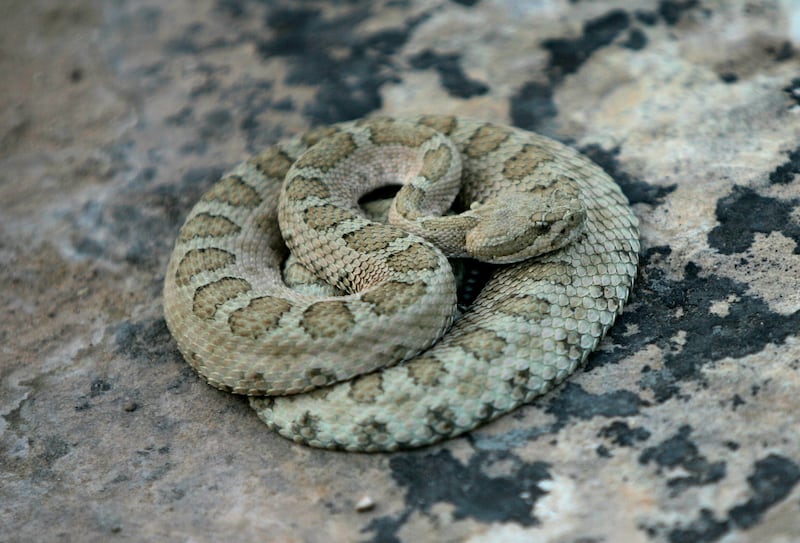SALT LAKE CITY — Coming across a rattlesnake while on a hike can be a scary experience, but knowing how they behave and doing a few simple things can go a long way in keeping you and the snakes safe.
According to the Utah Division of Wildlife Resources, rattlesnakes are on the move this time of year, looking for water as well as prey — rodents, birds and other reptiles — after emerging from their dens following a long winter.
Rattlesnakes — five species of which live in the Beehive State — are protected under Utah law, making it illegal to harass or kill one. The only exception is if you’re threatened and defending yourself. Otherwise, it is a class B misdemeanor to kill a rattlesnake.
Snake bites are quite rare, and like most animals, rattlesnakes fear humans and will do anything to avoid encounters.
“However, that changes if a snake thinks it’s threatened and there’s no way to escape,” Drew Dittmer, native species coordinator with the DWR, said in a statement. “In that case, the snake will often strike to protect itself. Just don’t approach it. Give it plenty of space, and leave it alone. Respect the snake, and you will be safe.”
So what should you do if you come across a rattlesnake while hiking?
- Remain calm and stay at least 5 feet from the snake.
- Don’t try to kill it.
- Don’t throw rocks or sticks at it. Rattlesnakes may respond to this by moving toward the person doing the throwing, rather than away from them.
- Alert others of its location and keep children and pets away from the area.
- If you hear a rattle, don’t jump or panic. Try to locate where the sound is coming from before moving, so you don’t step closer to the snake or on top of it.
- Check carefully before stepping over rocks, reaching onto ledges or sitting down on a rock or log.
Depending on where you live, you could find a snake in your yard. Aside from building a fence that rattlesnakes can’t penetrate, here are some other useful tips to help keep rattlesnakes out of your yard:
- Reduce the number of places that provide snakes with shelter such as brush, wood, rock and junk piles.
- Control rodent populations.
- Avoid scaring away harmless snake species, such as gophersnakes, which may deter rattlesnakes.
Gophersnakes (the most widespread and abundant snake species in Utah) are often confused with rattlesnakes because when alarmed, gophersnakes hiss and vibrate their tails. A rattlesnake’s tail is wide and blunt — and tipped with a rattle, of course — while a gophersnake’s tail is slender, pointed and lacks a rattle. Rattlesnakes also have broad, triangular-shaped heads, and vertical eye pupils, while nonvenomous snakes in Utah have longer snouts and round pupils.
If you can’t identify a snake from a distance, leave it alone and treat it as if it were venomous.
For additional rattlesnake safety tips log on to the Wild Aware Utah website at wildawareutah.org.

